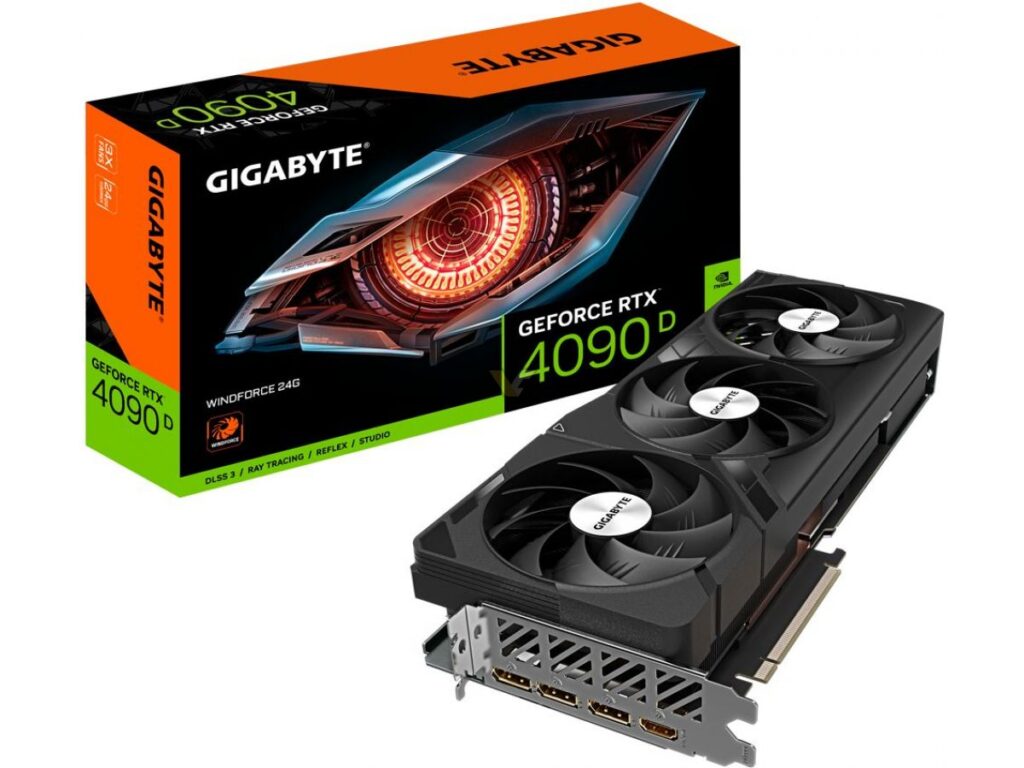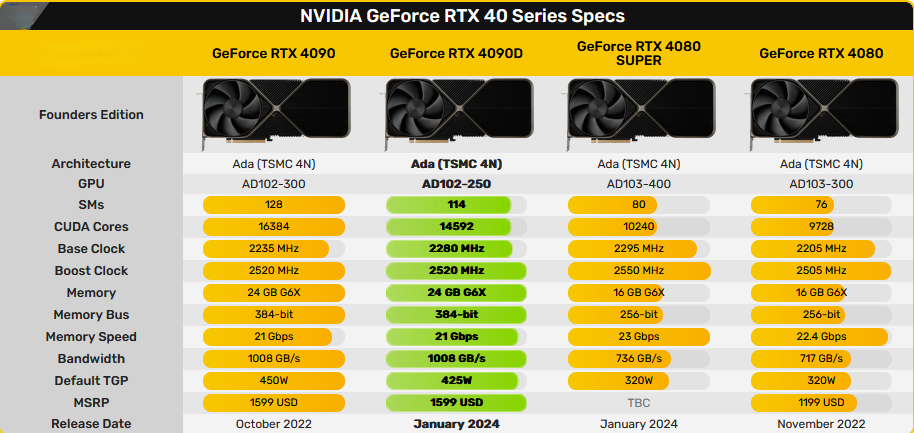Gigabyte preparing three RTX 4090D Cards
The company didn’t officially unveil new graphics cards for China; however, we do have the initial images.
In the competitive landscape of high-performance graphics cards, Gigabyte is paving its path with the announcement of its exclusive lineup within the GeForce RTX 4090D series. While some manufacturers have taken the leap with NVIDIA’s latest SKU, a few, including industry titans like ASUS and Gigabyte, have held their cards close. The anticipation builds as Gigabyte gears up to unveil a trio of models, setting a new benchmark in the graphics card arena.
These upcoming models are poised to share the stage with their RTX 4090 counterparts, boasting a familiar set of features and capabilities. However, Gigabyte is taking a unique stance—eschewing the common trend of factory overclocking. The newly minted RTX 4090D AERO 24, RTX 4090D WINDFORCE 24GB, and RTX 4090D GAMING 24GB are set to hit the market without this enhancement, a move that may redefine industry expectations and customer experiences.
This strategic decision by Gigabyte is not indicative of a compromise in performance but a testament to the raw, unaltered power of their hardware. By offering the cards in their original state, Gigabyte caters to a segment of enthusiasts who prefer to customize their overclocking profiles or prioritize long-term stability and integrity of the GPU.



NVIDIA’s RTX 4090D variant is making waves with its TDP locked at 425W, presenting a challenge for board partners who traditionally push the envelope with enhanced clock speeds. Yet, the maximum uplift reported barely exceeds +15 MHz, a subtle tweak achieved through software adjustments rather than hardware overhauls. Gigabyte’s RTX 4090D lineup, renowned for its gaming prowess, notably abstains from factory overclocking, aligning with NVIDIA’s stringent specifications.
The RTX 4090D distinguishes itself with a slightly streamlined CUDA core specification, featuring 14,592 cores—a modest 11% reduction from its predecessors. This adjustment, coupled with a 6% decrease in thermal design power (TDP), could potentially influence gaming performance, albeit subtly. Despite these nuanced calibrations, NVIDIA maintains the original pricing structure, an interesting choice in a market sensitive to cost-performance ratios.
The anticipated Gigabyte RTX 4090D series is slated for release by late January, with a noteworthy caveat: the RTX 4090D will be a region-specific offering, primarily available in China and select countries where the original RTX 4090 faces import restrictions. This strategic distribution is poised to address the unique market dynamics and regulatory frameworks affecting the global tech industry.




